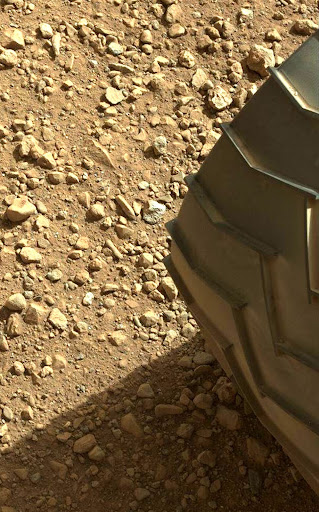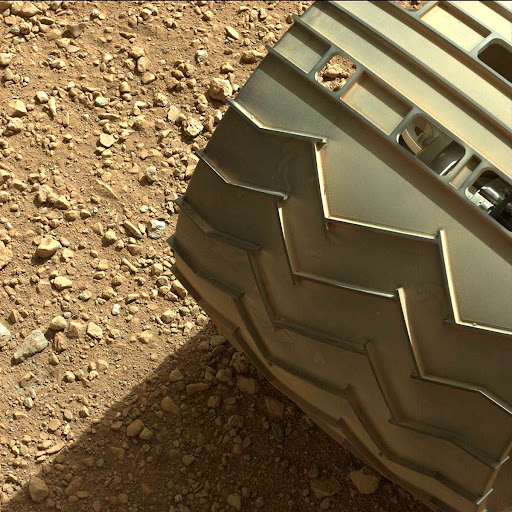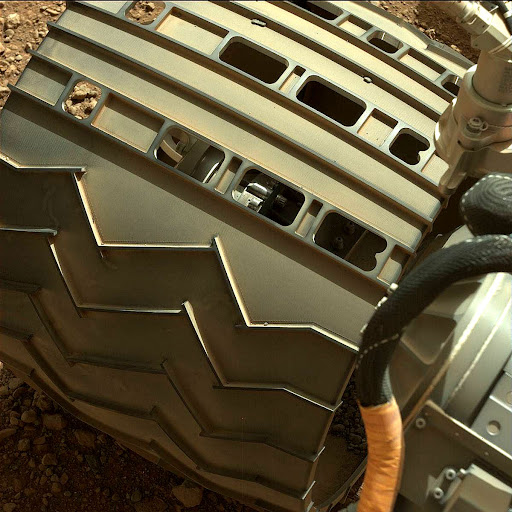New Mars Forums
You are not logged in.
- Topics: Active | Unanswered
Announcement
#1 Re: Pictures of Mars » Color images of Mars from the Spirit and Opportunity rovers » 2014-01-29 14:12:40
RobertDyck said "Salt water rising to the surface"
I made a time lapse images that may show some Sublimation of rock, I'm not sure but this is how I explain it on YouTube "Murray Ridge Pinnacle Island Rock, Questioning if There Were Some Sublimation of Martian Rock From Time Lapse Images (Sol 3540 and Sol 3557) Showing What Appears To Be Some Shrinkage and Missing Mass Inside of Rock at 7 O'clock That Appeared in Front of Opportunity on "Murray Ridge" called "Pinnacle Island"
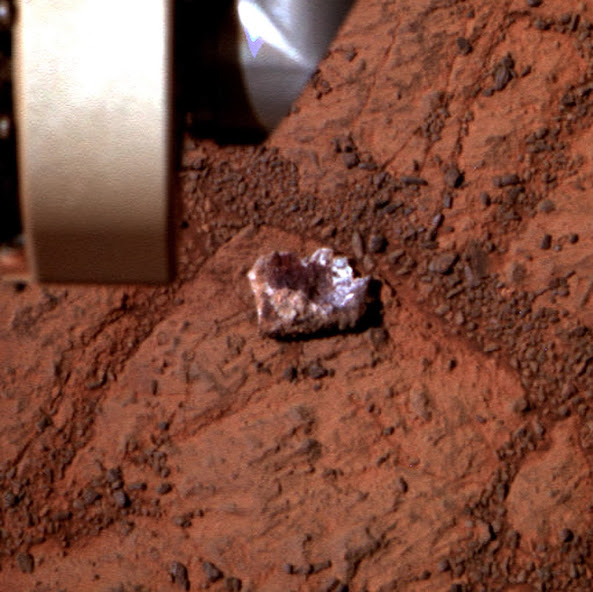
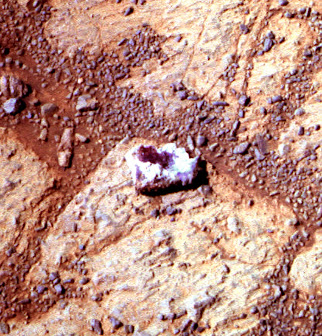
Please note that the two images were taken at slightly different elevations and angles...
#2 Re: Pictures of Mars » Color images of Mars from the Spirit and Opportunity rovers » 2014-01-26 17:22:00
Sorry I think I fixed it
#3 Re: Pictures of Mars » Color images of Mars from the Spirit and Opportunity rovers » 2014-01-24 18:12:37
I'm sure there are a lot of people here debating this image, so I thought I would follow the science of how this rock came out of no where to be where it is today? My guess is it is a crushed rock that popped out of one the wheels it was sitting under...
My colorized image from the RGB filter images

NASA suplied color image

#4 Re: Pictures of Mars » Color images of Mars from the Spirit and Opportunity rovers » 2013-02-14 18:52:37
Curiosity sol 182
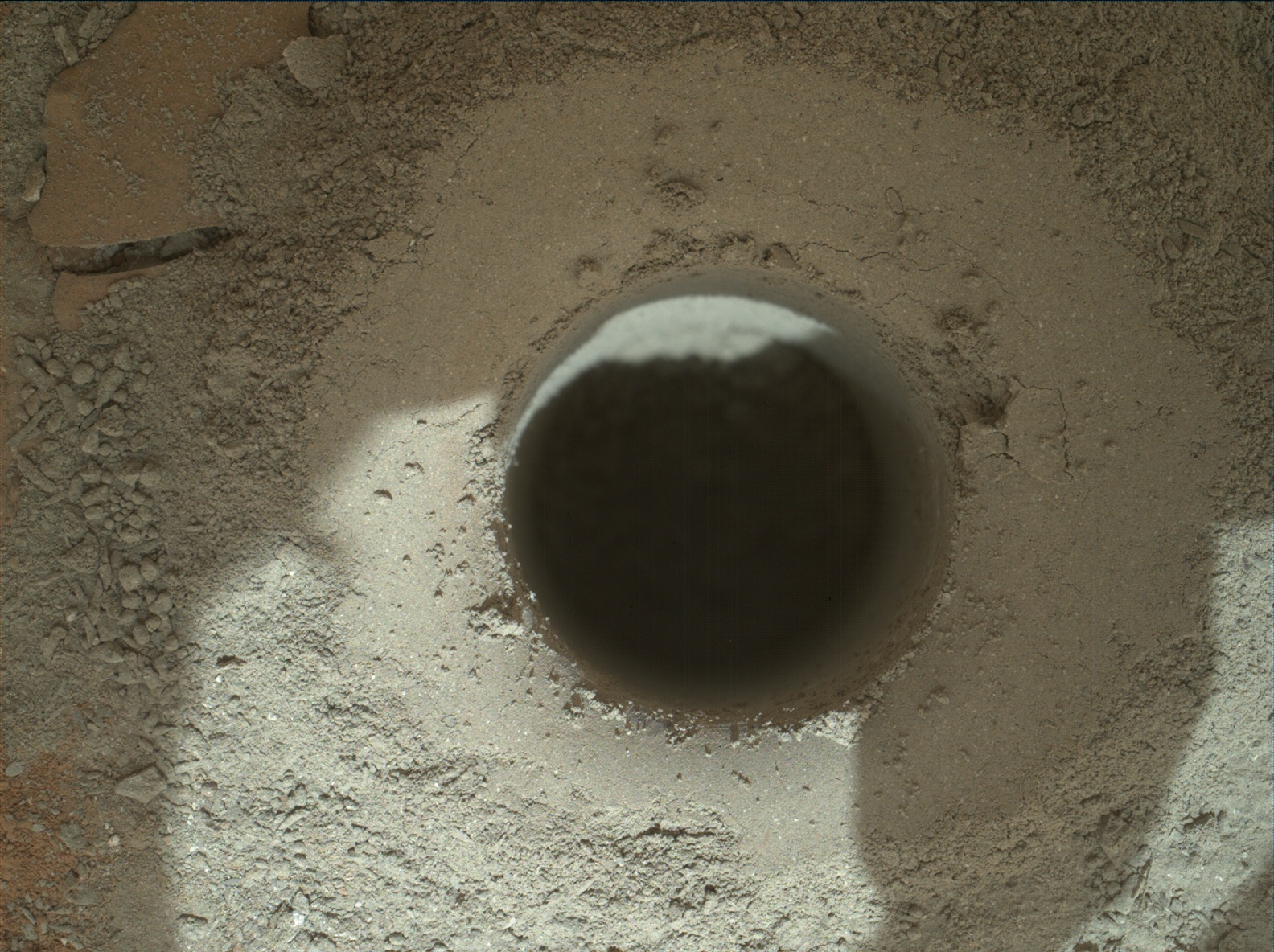
Here is something that the Curiosity science team should consider. The EU are proposing a drill and UV florescence on their next mission to Mars that will shine the florescence light on the drill as they drill. Maybe with some ingenuity Curiosity may have that same advantage. If you take something out of its environment then it will most likely die right away but for a brief moment after you dig it up it is struggling to stay alive. So the drill / florescent will record that brief moment that microbe is alive and moving around. If there is any organics in the material they dug up dead or alive they can first spot it with florescence similar to what they just did in the Antarctica with the first confirmation of microbial life living 2,500 ft below its icy surface...
http://www.popsci.com/science/article/2 … r-pressure
"At the time, the scientists conducted a preliminary test in which DNA-sensitive dye made cells in the sample glow green under a microscope, suggesting life."

"Lake Whillans What six inches of lake looks like half a mile under an Antarctic glacier, it's not much but some call it home. Dr. Alberto Behar, JPL/ASU"
"We have extracted DNA and will be shipping it back to the US for sequencing—-this will tell us who is there and provide us with info on how they make a living," wrote Priscu, in an email to PopSci.
http://www.nature.com/news/lake-drillin … ce-1.12405
"The scientists counted about 1,000 bacteria per millilitre of lake water — roughly one-tenth the abundance of microbes in the oceans. In Petri dishes, the bacteria show a “really good growth rate”, says Priscu."
#5 Re: Pictures of Mars » Color images of Mars from the Spirit and Opportunity rovers » 2013-01-29 20:18:34
Bob Clark your welcome, always glad to help.
#6 Re: Pictures of Mars » Color images of Mars from the Spirit and Opportunity rovers » 2013-01-28 15:13:50
Bob Clark wrote "Do you have a reference for papers written on this?,"
Back in the days I remembered that an Oregon research published paper called for using near UV for looking for organics, here is something that came out afterwards that talk about this:
"Study: UV light might find life on Mars,"
"U.S. and British scientists say they have developed a method using ultraviolet light that could identify any organic material present in the soil of Mars."
http://www.upi.com/Science_News/2008/07 … z2JJ3JaWlb
I can't find that original paper, the time was between the MER rovers and the Phoenix Lander Landing on Mars, both rovers and Lander had about 440/ 432 nm light wave not the 365/375 range near uv for florescence for identifying aromatic organic molecules. I did do a quick Google search and found a proposed mission of the EU that says:
"Laser-Induced Fluorescence Emission (L.I.F.E.): searching for Mars organics with a UV-enhanced PanCam.
"The European Space Agency will launch the ExoMars mission in 2016 with a primary goal of surveying the martian subsurface for evidence of organic material. We have recently investigated the utility of including either a 365 nm light-emitting diode or a 375 nm laser light source in the ExoMars rover panoramic camera (PanCam). Such a modification would make it feasible to monitor rover drill cuttings optically for the fluorescence signatures of aromatic organic molecules and map the distribution of polycyclic aromatic hydrocarbons (PAHs) as a function of depth to the 2 m limit of the ExoMars drill."
http://www.ncbi.nlm.nih.gov/pubmed/20041748
The image I shown above by Curiosity is with a white light and a 365 nm wavelength. I live in the desert southwest US where I found one of the most poisonous scorpions in our area taking a shower with me so I ran out and got a black light-emitting diode flashlight. Note, black lights are also good for finding dried up pet soiled carpeting, so if there is life on Mars we may find its waste before we find it. In other words it may be as simple as, to find life on Mars using fluorescence all we have to do is follow the dried up urine trail. Some human urine freezes at below -120 C...
#7 Re: Pictures of Mars » Color images of Mars from the Spirit and Opportunity rovers » 2013-01-28 06:41:07
One of NASA's little dark secret that if a good scientist or reporter looked deep enough into NASA's information that was already published they will find that Curiosity has organic identifying fluorescents that they used to take this image at night on Mars, a 365 nm light source. This is the right light source to look for organics. The original image of the one below is much more detailed and had hundreds of different dots about 1 pixel wide that is red, yellow and green, something you might identify as organic so those small dots may be either be organic or an artifact? I'm talking about the dots not those verticle streaks you see that are artifacts. Note this orginal image is 4.0 mb 1632 x 1200 pixels??.

The right UV light source to look for organics with Florissant's weren't on any other Martian Lander's or rover's, it was first suggested right after the MER Rover's landed, Phoenix Lander didn't have it either. I have a flashlight black light, UV, that I look for scorpions in my house at night, it is very effective in exposing organic compounds that can be later confirmed with their other instruments. Imagine them finding something crawling around under an upturned rock or in a drilled rock like this.
Here is a link to what a scorpion looks like in a similar UV black light source as Curiosities.
http://www.youtube.com/watch?v=-nXYJRhxoIk
For kicks and giggles, I made a time lapse movie of several different images including the one above at different times of the night, here is what it looks like here:
As you can see unfortunately we didn't make first contact yet...
#8 Re: Pictures of Mars » Color images of Mars from the Spirit and Opportunity rovers » 2013-01-21 06:52:58
louis I agree, they are suppose to be very good with pointing the laser, they should have at least tried that?
Here are some more from Curiosity sol 160 thru sol 162 that may be a little controversial?
Rover exposed chalk

White rock
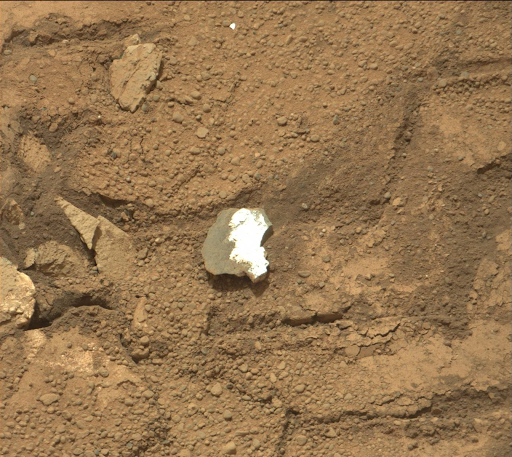
Chalk

Pearl
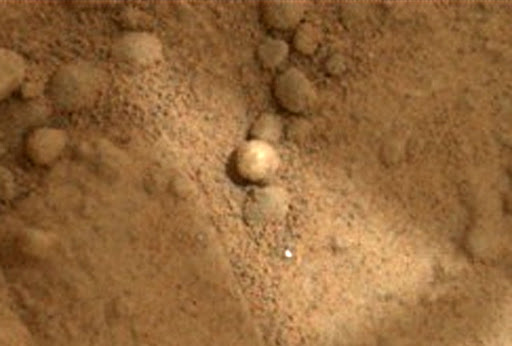
#9 Re: Pictures of Mars » Color images of Mars from the Spirit and Opportunity rovers » 2013-01-18 06:17:36
Curiosity sol 160 - A lot of white stuff, most likely salts, under and in the covered up rocks?
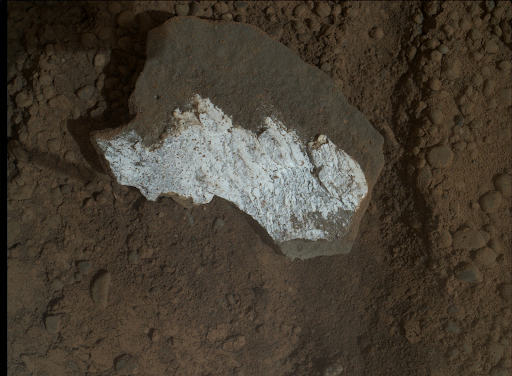
Opportunity sol 3187
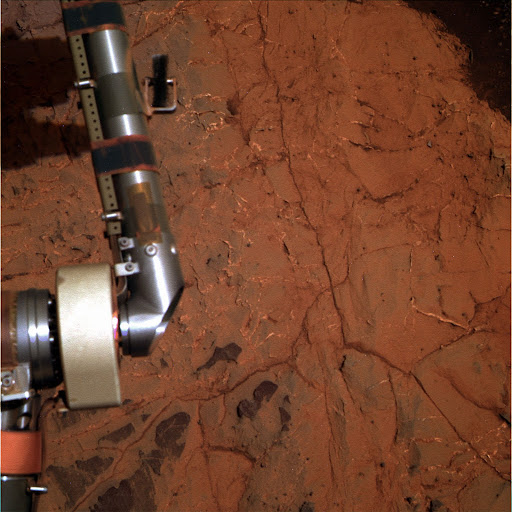
#10 Re: Pictures of Mars » Color images of Mars from the Spirit and Opportunity rovers » 2013-01-03 17:27:57
Here is something I saw when it first came out Dec 19th but thought it may be another discarded piece off the rover but after looking at it more I now wish I would have posted it right away. Blogs are now calling it a "Flower." I sharpened Curiosities image a bit and added more contrast and this is what it looks like, note the whitish reflective partially covered rocks above left and below left of it???

#11 Re: Pictures of Mars » Color images of Mars from the Spirit and Opportunity rovers » 2012-12-19 03:38:07
Back at Opportunity, they spied the "razorback-like" rock I showed above and focused into taking some more close up images of it.
Sol 3164

#12 Re: Pictures of Mars » Color images of Mars from the Spirit and Opportunity rovers » 2012-12-17 19:04:17
I hope all this image shows on mastcam sol 128 of Curiosity is just badly trimmed wires???

#13 Re: Pictures of Mars » Color images of Mars from the Spirit and Opportunity rovers » 2012-12-11 19:58:47
Here is something interesting at Opportunities site?
1P408357628EL7M1.JPG
Looking closer at the new image above there's a familiar looking rock found only in Endurance crater. The rock is the same kind of rock with "razorback" feature that the MER science team claimed showed recent activity relating to water flow in Endurance crater. Is there recent geyser activity at Endeavor crater, clays are also formed in geological active areas.
Drill here for water?
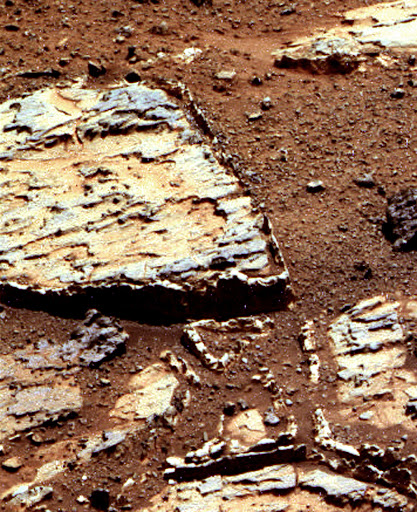
This "razorback" feature was photographed by Mars Rover Opportunity at Endurance Crater, Mars in July 2004. (NASA/JPL)

The 'Razorback' Mystery
"The pointy features in this image may only be a few centimeters high and less than 1 centimeter (0.4 inches) wide, but they generate major scientific interest. Dubbed "Razorback," this chunk of rock sticks up at the edge of flat rocks in "Endurance Crater." Based on their understanding of processes on Earth, scientists believe these features may have formed when fluids migrated through fractures, depositing minerals. Fracture-filling minerals would have formed veins composed of a harder material that eroded more slowly than the rock slabs."
#14 Re: Pictures of Mars » Color images of Mars from the Spirit and Opportunity rovers » 2012-12-08 20:21:51
Meanwhile on the other side of the planet Opportunity has just parked in a clay area on the rim of Endeavor crater, clay areas on earth are full of life. Here are some of the latest images up to sol 3153:
"Geologic clay deposits are mostly composed of phyllosilicate minerals containing variable amounts of water trapped in the mineral structure. Clay minerals are typically formed over long periods of time by the gradual chemical weathering of rocks, usually silicate-bearing, by low concentrations of carbonic acid and other diluted solvents. These solvents, usually acidic, migrate through the weathering rock after leaching through upper weathered layers. In addition to the weathering process, some clay minerals are formed by hydrothermal activity.
Clay deposits are typically associated with very low energy depositional environments such as large lakes and marine basins."
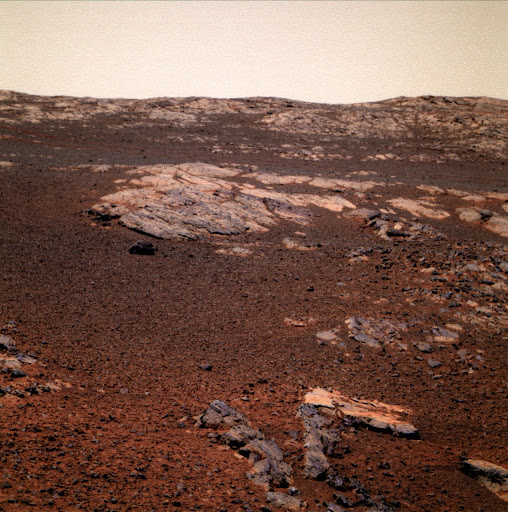
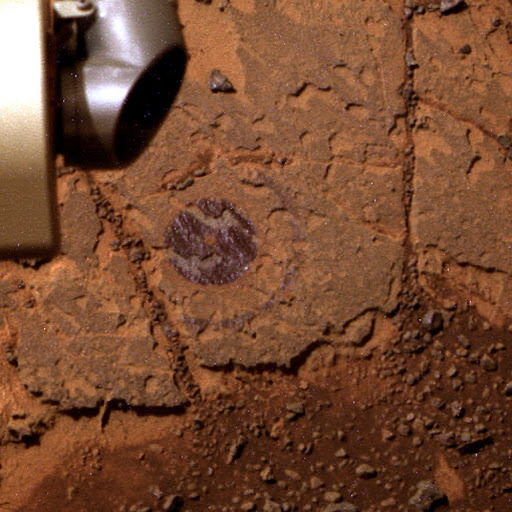


#15 Re: Pictures of Mars » Color images of Mars from the Spirit and Opportunity rovers » 2012-11-29 03:16:11
NBC report on "one for the history books"
http://video.msnbc.msn.com/nightly-news … /#50002282
I posted this on a different post but I thought I will repost it here.
Imagine a world similar to earth early in its history where life was abundant on land, in the sea and underground, a world where an apocalyptical event much greater than the one that killed the dinosaurs off was about to hit the planet. Imagine the terror of Martian life forms looking up into the night sky when it happened. The planet shook from a large comet exploding after impact filling the night sky with 3 thousand degrees hot plasma, 8 million cubic miles of impacted debris and poisonous gas. A force over 1 million times greater than the power of the nuclear bomb that was dropped on Hiroshima Japan just shook the planet impacting at the Hellas Impact basin area as a result the crater floor is now about 7,152 m (23,465 ft) deep extending about 2,300 km (1,400 mi) east to west.
Are we seeing its victims here?
https://picasaweb.google.com/1041440224 … kingRocks#
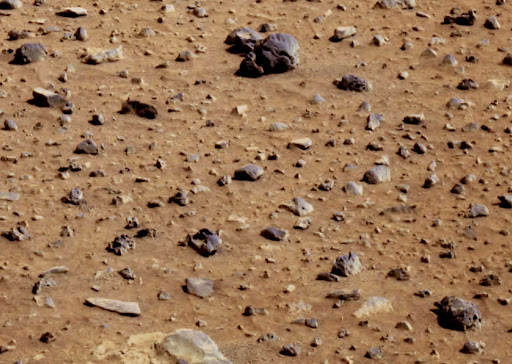
The above thought was followed with half joking images I showed people at space.com blog in 2004 about what looked like a grave yard of fossils at the Spirit rovers landing site, I even named the rocks. Spirit landed in a very low elevation that later was proven to be a dry lake bed. After looking at over 10,000 images from the MER rovers nothing looked like the fossilize looking rocks at the Spirit rovers landing site. Looking at the images too much I started thinking that maybe that they were fossils, this was before they verified water on Mars with other data that supports the possibility of life on Mars at sometime in its history.
Now at Curiosity Landing site lets revisit that thought, according to the Curiosity science team Curiosity landed in a dry river bed, are these fossilized rocks?
Dead Horse looking rock?
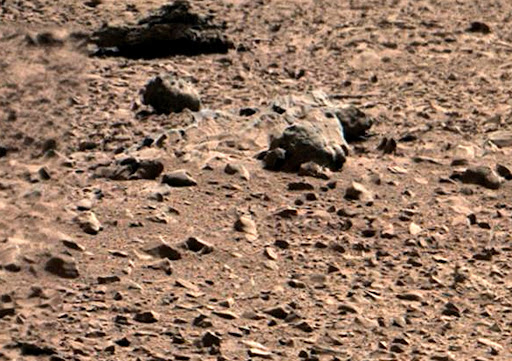
???


#16 Re: Pictures of Mars » Color images of Mars from the Spirit and Opportunity rovers » 2012-11-29 03:00:00
Opportunity


#17 Re: Life on Mars » The Phoenix Lander found life on Mars » 2012-11-28 19:05:52
The consequences if they do confirm large fossils on Mars would be unimaginably huge, even confirming microscopic life on Mars would alter humans conception of the universe. As far as habitable zones for life our outer solar system worlds that get hundreds of times less light than earth does has the best chance outside Mars of finding life, habitable zone that far out in our own solar system would mean almost all the stars no matter how cold they are may have life.
The only life forms we know of are carbon based as a result have organic chemicals. Our understanding of whether there is currently life on Mars or that there was life on Mars in the past is due to what we can extrapolate out of all the data we currently know about life on earth and information we get from exploring Mars. We currently know that there is water in the soil, the reason I said soil instead of regolith, regolith = similar to soil but without the organics, because I am sure there are organics on Mars although none to this date have been found -- see first post above that adds proof to this and the fact that Earth got all its water and organics from space, asteroids and comets, then why shouldn't Mars have some too since we know that it now has water ice. Water-ice and organics is abundant in our outer solar system away from the high UV's. Organics directly on Mars surface in high UV's would be destroyed so we have to dig it up to find it.
"In 2010 The discovery of the highly reactive chemical perchlorate in the phoenix Lander led NASA's Christopher McKay, an astrobiologist at the Ames Research Center, and Navarro-Gonzalez to test whether the perchlorate had skewed the Viking results that showed no sign of organic material on Mars.
Perchlorate, which consists of chlorine and oxygen, actively absorbs electrons from surrounding compounds when heated. "It could sit there in the Martian soil with organics around it for billions of years and not break them down," McKay said. "But when you heat the soil to check for organics, the perchlorate destroys them rapidly."
The Viking Lander dug some up but because it also dug up perchlorates that have a high amount of oxygen in it then as soon as they heated it up to check for organics it destroyed the organic before we could find it, the Phoenix Lander did the same thing. So to-date no organic has been found on Mars, without finding organics they will never admit to ever seeing something that looks like life on Mars, the phoenix Lander science team found a lot of perchlorates in the soil so they also couldn’t confirm organics because they didn’t anticipate this. NASA now knows what to do and not to do with curiosity and what to test for to confirm organics. So that big announcement that they will soon make, “"one for the history books.” may not only confirm organics they may also confirm advanced organic chemistry that is the precursor of life.
With that being said don’t hold your breath on a soon to be released "one for the history books announcement; it may not come this early in curiosities mission.
NBC report on "one for the history books"
#18 Re: Life on Mars » The Phoenix Lander found life on Mars » 2012-11-28 01:03:41
Imagine a world similar to earth early in its history where life was abundant on land, in the sea and underground, a world where an apocalyptical event much greater than the one that killed the dinosaurs off was about to hit the planet. Imagine the terror of Martian life forms looking up into the night sky when it happened. The planet shook from a large comet exploding after impact filling the night sky with 3 thousand degrees hot plasma, 8 million cubic miles of impacted debris and poisonous gas. A force over 1 million times greater than the power of the nuclear bomb that was dropped on Hiroshima Japan just shook the planet impacting at the Hellas Impact basin area as a result the crater floor is now about 7,152 m (23,465 ft) deep extending about 2,300 km (1,400 mi) east to west.
Are we seeing its victims here?
https://picasaweb.google.com/1041440224 … kingRocks#

The above thought was followed with half joking images I showed people at space.com blog in 2004 about what looked like a grave yard of fossils at the Spirit rovers landing site, I even named the rocks. After looking at over 10,000 images from the MER rovers nothing looked like the fossilize looking rocks at the Spirit rovers landing site. Looking at the images too much I started thinking that maybe that they were fossils, this was before they verified water on Mars with other data that supports the possibility of life on Mars at sometime in its history.
Now at Curiosity Landing site lets revisit that thought, are these fossilized rocks?
Dead Horse looking rock?

???


#19 Re: Pictures of Mars » Color images of Mars from the Spirit and Opportunity rovers » 2012-11-25 02:03:33
Since we will not know what they are talking about at Curiosities site for another two weeks "for the history books," it leaves us some more room to speculate. What if they found an active warm geyser field, as speculative as that may seem they are surprised by the high temperature in the area at this time of year.
They already recorded temperature as high as 40 degrees Fahrenheit during the day, warmer than any time ever recorded on Mars but Curiosity landed at the end of winter time, it shouldn't be that warm yet? To back some of my logic up is these images just released of porous rocks with larger holes in them on sol 107. Yea they look like volcanic rocks maybe even pumice but the higher temprature readings may mean they are still active warm areas on Mars???
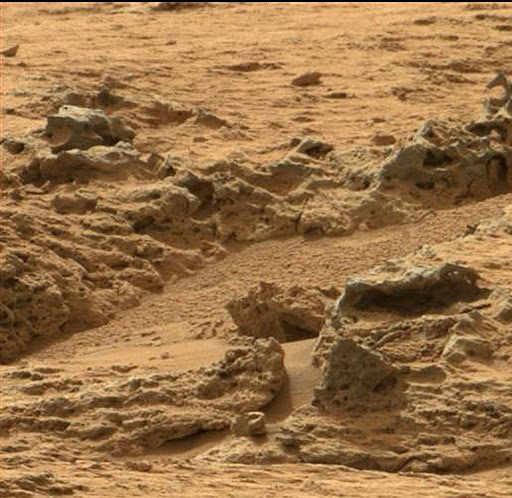



#20 Re: Pictures of Mars » Color images of Mars from the Spirit and Opportunity rovers » 2012-11-20 20:00:26
Curiosity team to announce new " "for the history books" announcement to be made within two weeks.
http://www.space.com/18565-mars-rover-c…stery.html
My guess is that they will finally confirm organics in the soil the next step is confirming extant (still in existence) life on Mars that they also found at the Viking and Phoenix Landers site. Viking Landers found organics, the Phoenix Lander discovered it but couldn't verify it because of perchorates in the soil skewed the results, it will be confirmed that what Chris McKay said in 2010.
"In 2010 The discovery of the highly reactive chemical perchlorate in the phoenix Lander led NASA's Christopher McKay, an astrobiologist at the Ames Research Center, and Navarro-Gonzalez to test whether the perchlorate had skewed the Viking results that showed no sign of organic material on Mars.
Perchlorate, which consists of chlorine and oxygen, actively absorbs electrons from surrounding compounds when heated. "It could sit there in the Martian soil with organics around it for billions of years and not break them down," McKay said. "But when you heat the soil to check for organics, the perchlorate destroys them rapidly."
For possibility of life found at the Mars Phoenix Landers site see
http://www.youtube.com/watch?v=LUHZ-aMb … yE_KtGSTSw
Here are some new Opportunity images sol 3119

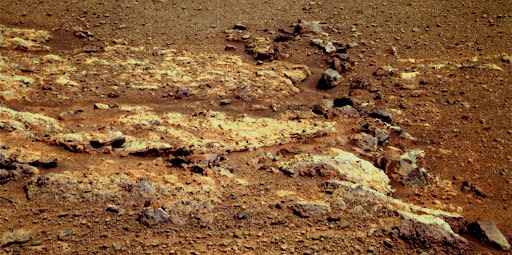
sol 3135
#21 Re: Life on Mars » The Phoenix Lander found life on Mars » 2012-11-20 16:38:21
Curiosity team to announce new " "for the history books" announcement to be made within two weeks.
http://www.space.com/18565-mars-rover-c … stery.html
My guess is that they will finally confirm organics in the soil the next step is confirming extant (still in existence) life on Mars that they also found at the Viking and Phoenix Landers site. Viking Landers found organics, the Phoenix Lander discovered it but couldn't verify it because of perchorates in the soil skewed the results, it will be confirmed that what Chris McKay said in 2010.
"In 2010 The discovery of the highly reactive chemical perchlorate in the phoenix Lander led NASA's Christopher McKay, an astrobiologist at the Ames Research Center, and Navarro-Gonzalez to test whether the perchlorate had skewed the Viking results that showed no sign of organic material on Mars.
Perchlorate, which consists of chlorine and oxygen, actively absorbs electrons from surrounding compounds when heated. "It could sit there in the Martian soil with organics around it for billions of years and not break them down," McKay said. "But when you heat the soil to check for organics, the perchlorate destroys them rapidly."
#22 Re: Pictures of Mars » Color images of Mars from the Spirit and Opportunity rovers » 2012-11-10 18:29:07
louis I think it is the later, they want to keep the information to themsleves so there results can be published in a major magazine like Nature. All the rover and lander teams did this, but Curiosity seems to be even more quit. Of course they do want their results to be credible to the sigma 5 level which is good science.
I hope they are trying to solve the perchlorate mystery which if heated will destroy organics, that is what NASA astrobiologist Chris McKay claimed skewed the Viking and Phoenix Lander results.
"In 2010 The discovery of the highly reactive chemical perchlorate in the phoenix Lander led NASA's Christopher McKay, an astrobiologist at the Ames Research Center, and Navarro-Gonzalez to test whether the perchlorate had skewed the Viking results that showed no sign of organic material on Mars
Perchlorate, which consists of chlorine and oxygen, actively absorbs electrons from surrounding compounds when heated. "It could sit there in the Martian soil with organics around it for billions of years and not break them down," McKay said. "But when you heat the soil to check for organics, the perchlorate destroys them rapidly."
Here's some more of Opportunities images inside Endeavour Crater:
sol 3119
#23 Re: Pictures of Mars » Color images of Mars from the Spirit and Opportunity rovers » 2012-11-09 18:31:02
Something is interesting in the dunes???
Curiosity dug 6 trenches in the sand so far, what is so interesting there, is it this bright object we saw earlier???

sol 93

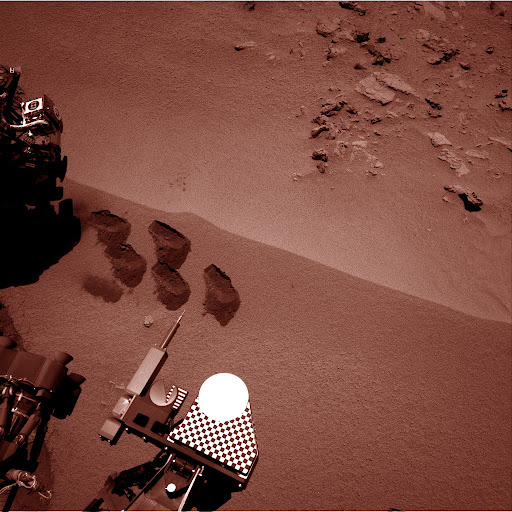
On the other side of mars Opportunity is in Endeavour Crater.
sol 3119
#24 Re: Pictures of Mars » Color images of Mars from the Spirit and Opportunity rovers » 2012-11-08 02:24:41
Here is something strange at Opportunity site, the rock looks like someone shined a black light on it, I had to remove a lot of the saturation to process it.
sol 3117

Original false color image

#25 Re: Pictures of Mars » Color images of Mars from the Spirit and Opportunity rovers » 2012-11-04 00:34:16
There is a posiblility that the ding marks were done during landing as someone else pointed out on a different blog, but as I told them:
I thought of that too, that is why I looked at the wheels before it moved. On sol 3 they took images of the wheels before it moved, there were no ding marks or any other marks on the wheels, however with that being said the bottom of the wheels was not visible at the time they took images of the wheels. These ding marks are on most all of the wheels on all the visible surfaces so although it is possible that the damage was done on the bottom of the wheels at landing time when it first fell from the sky, it is more probable that the ding marks were made during its short drive.
Here is what the wheels looked like on sol 3 before it moved, see below:

